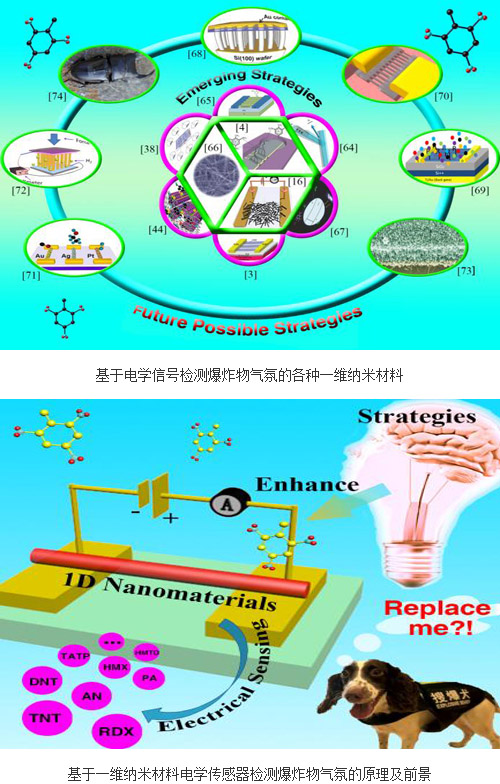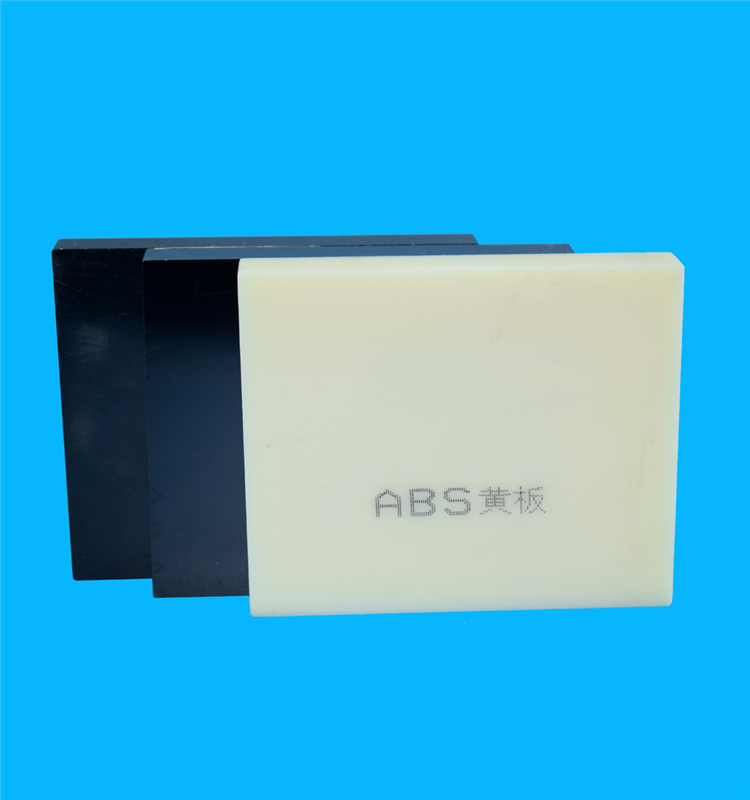
On February 17th, Advanced Functional Materials, a materials journal belonging to the Wiley Group Press, was published online by the team of Dou Xincun, a researcher of the Micro-Sensing Laboratory of the Institute of Physics and Chemistry, Chinese Academy of Sciences, entitled “Emerging and Future Possible Strategies for Enhancing 1D Inorganic.†Nanomaterials-Based Electrical Sensors to Explosives Vapors Detection's review article.
The detection of explosives as an important measure against anti-terrorism explosion is increasingly highlighting the broad application prospects. The explosive vapor detection technology has the advantages of non-contact, simple sampling, high reliability, excellent performance, multi-function integration, mass production, and the like, making it possible to realize miniaturization, low-cost, and high-precision of explosive detectors. One-dimensional inorganic nanomaterials have the advantages of large specific surface area, quantum confinement effect, high reactivity, outstanding electrical, optical and chemical properties and anisotropy, and their structure and properties are adjustable. Therefore, one-dimensional inorganic nanomaterials are ideal nanocells for constructing explosive sensors. However, there are many challenges in the field of explosive detection, such as high production cost, high energy consumption, difficulty in material assembly and layout, poor device stability, and poor repeatability. The sensitivity is not high enough, and it is difficult to identify a wide range of explosives. .
The scientific research personnel of Xinjiang Institute of Physics and Chemistry first systematically summarized and reviewed the explosive vapor detection based on one-dimensional inorganic nanomaterials published since 2010, and divided the work according to different strategies used to enhance the performance of electrical sensors. Ordered arrangement of arrays, surface modification, optoelectronic enhancement, flexible design, Schottky junction, and sensor array construction. Researchers have also proposed strategies and methods that can be applied to enhance the performance of explosive electronic sensor detection, including vertical array structure, one-step structured structure, "key-key" design, self-driven sensing, and transferable and wearable. Sensor design and so on. This review article summarizes typical explosives vapor detection based on electrical sensors, extracts advanced and feasible experimental methods, and presents some solutions to existing problems in the face of the gap between laboratory work and actual testing. Feasibility plan, at the same time, raised the issue of non-standard explosives detection being neglected, and provided new research ideas and theoretical basis for future explosives detection based on electrical sensors.
Since 2012, the laboratory has been engaged in research on micro-sensing for a long time, and is particularly committed to exploring new theories, new methods, and new materials for explosives detection. It has achieved a series of important results. Up to now, it has been in Advanced Functional Materials. , Advanced Optical Materials, Small, Nanoscale, Journal of Materials Chemistry, Journal of Physical Chemistry C and other international journals published more than 10 academic papers, proposed Schottky structure, transition metal doping, defect state control, crystal plane regulation , photoelectrocatalysis and other new ideas for the detection of explosives. The topical review article published this time summarizes the scientific research achievements of the micro-sensing laboratory in this area. For example, the barrier height and adsorption energy of the Schottky junction are used to enhance the silicon nanowire array/graphene. The detection performance (Adv. Funct. Mater. 2015, 25, 4039) introduces light to enhance the performance of gas detection (Nanoscale 2013, 5, 10693).
This work was funded by the National Natural Science Foundation of China, the 100-person Plan of the Chinese Academy of Sciences, and the Innovation Fund.
The ABS board, the professional name is acrylonitrile / butadiene / styrene copolymer in English name is the Acrylonitrile-butdiene-styrene.
ABS board is a new material plate industry, is currently the largest output, the most widely used polymer,the products like abs plastic sheet,clear abs plastic sheet,abs sheets for vacuum forming. It will PS Board, PP board, SAN board, BS board, the performance of organic unity, both tough hard, excellent mechanical properties of rigid phase equilibrium.

Thick Plastic Abs Sheet for clamshell Key Features :
- High rigidity and impact strength
-
Excellent abrasion resistance
-
Excellent electrical properties, moisture and creep resistance
-
ABS has good chemical and stress cracking resistance to inorganic salt solutions , alkalis and many acids .( Except strong oxidizing acids )
- ABS is easily machined to close tolerances , is tough , dimensionally stable and may be thermoformed.
Thick Plastic ABS Sheet for clamshell Applications:
- Automotive interior and exterior
- Aircraft interior trims
- Home appliances
- Architectual model buildings & prototyppe models
- Luggage
- Machine parts and rollers
- Pipes & fittings
- Trays
ABS Sheet,Color ABS Sheet,Plastic ABS Sheet,ABS Engraving Sheet
SHENZHEN XIONGYIHUA PLASTIC INSULATION LTD , https://www.xyhplastic.com